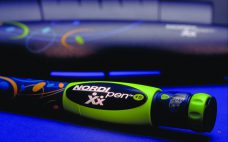This issue introduces an adjustment to our themes of coverage, which for much of BPI’s history have rotated from production to processing to manufacturing, with the introduction a few years ago of the “bioexecutive” focus in December. My somewhat pedantic nature always was slightly offended by the idea of separating “manufacturing” from two other themes that were also elements of manufacturing themselves, even though it was mostly just a matter of semantics. And our new product-development theme encompasses much of…
March 2017
March Spotlight
Developing Standards for Clinical Research This past fall, the nonprofit Alliance for Clinical Research Excellence and Safety (ACRES) and its partner the British Standards Institution (BSI) launched a Global Standards for Excellence (GSE) working party to develop standards for accreditation of high-performing clinical research sites around the world. The goals are to promote professionalism and excellence in clinical research; accelerate medicine development; and enhance the performance, safety, and quality of clinical trials. Sara Monday (ACRES VP of site development and…
The Era of Digital Biomanufacturing
The digital revolution in manufacturing began with an explosion in monitoring, analytics, and new computing capabilities. Combined with such advances as artificial intelligence (AI), automation, and robotics, they are changing our concepts of manufacturing in general — from product development and factory operations to materials supply. This evolution also connects product and process designers and leaders in manufacturing engineering. Digital manufacturing (DM) isn’t a dream or a concept on some advanced developer’s design table; it’s occurring now and will change…
CMC Strategy Forum on Combination Products for Biopharmaceuticals: Emerging Trends in Development, GMPs, and Regulatory Expectations
On 26 January 2015, CASSS hosted a program in its ongoing series of semiannual Chemistry, Manufacturing, and Controls (CMC) Strategy Forums at the Mayflower Hotel in Washington, DC. Since this series’s inception in 2002, each installment has focused on one of a wide array of topics spanning the fields of biopharmaceutical product development, manufacturing, analysis, quality, and regulation. For this forum, the program committee chose to devote a full program to a topic that was previously the focus of an…
Drivers, Opportunities, and Limits of Continuous Processing
Biologics represent a significant group of approved drugs, and they are expected to continue their exceptional growth in the foreseeable future. At first glance, innovative monoclonal antibodies (MAbs) and their derivatives seem to dominate the field; however, biobetters, biosimilars, and other therapeutic proteins have gained in relevance lately. This diverse portfolio also is reflected in the range of different biomanufacturing processes used. Most blockbuster antibodies are produced by mammalian cells cultured in large bioreactors (10–20 mÂł) in fed-batch mode. But…
Biological Characterization Using Protein Crystal Measurements
Monoclonal antibodies (MAbs) have become important therapies and are projected to generate US$125 billion in sales by 2020 (1). Given that potential revenue, biopharmaceutical companies are highly motivated to find novel ways to deliver their drug products and extend patent lifetimes. Many such therapies are administered intravenously at low concentration and large volumes (2). Althea’s Crystalomics technology facilitates delivery of traditional biotherapeutics with high concentration, low viscosity, and low volume by arranging a drug’s individual molecules in an ordered crystal…
Comparing Culture Methods in Monoclonal Antibody Production: Batch, Fed-Batch, and Perfusion
Recombinant protein manufacturing with Chinese hamster ovary (CHO) cells represents over 70% of the entire biopharmaceutical industry (1). In fact, human monoclonal antibodies (hMAbs) produced by CHO cells have played a major role in both the diagnostic and therapeutic markets for decades. One of the first human–mouse chimeric MAbs to obtain FDA approval was Roche’s rituximab treatment for non-Hodgkin’s lymphoma, chronic lymphocytic leukemia, and rheumatoid arthritis. Since that approval in 1997, scores of chimeric, humanized, and human MAbs have gained…
Conditional/Inducible Gene-Expression Mouse Models Using Advanced Gene Editing
Transgenic mouse models have been an essential part of biomedical research for many decades. They have provided valuable insights in developmental biology, gene regulation, and our understanding of the genetic basis of human disease. And they play a critical role in drug discovery and development. Traditional methods to generate these mouse models entailed a milieu of disadvantages: e.g., low efficiency, high incidence of undesirable recombination outcomes, randomly and multiply inserted genes of interest, ectopic expression, gene silencing, and insertional mutations…
The Cell and Gene Therapy Industry: Looking at 2016 and Beyond
Politically 2016 was surprising and dramatic here in the United Kingdom and elsewhere. Although it was not surprising for cell and gene therapies per se, the growth that we have seen in this industry has been pretty dramatic around the world as well. The industry has seen investors of all types maintaining their interest in cell and gene therapy, with a number of new deals made: e.g., Bluebird bio and Medigene signed a strategic R&D collaboration and licensing agreement, and…
Ask the Expert Enabling Custom Solutions for Downstream Processing of Future Therapies: An Adenoassociated Virus Case Study
with Orjana Terova Orjana Terova is a purification product manager in the bioproduction division of Thermo Fisher Scientific. In a BPI webinar on 9 December 2016, she discussed the company’s custom resin program for purification of biological products. Thermo Fisher Scientific has dedicated a pilot-plant facility for this program. Terova’s Presentation Speed is the main development driver in downstream processing, but quality and efficiency are always critical. Purification processes need the highest resolution, capacity, salt tolerance, and operation speed possible.…







